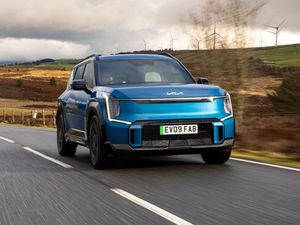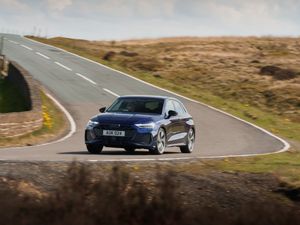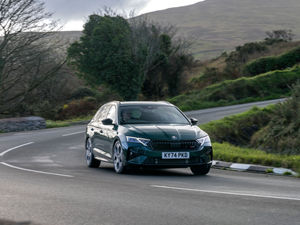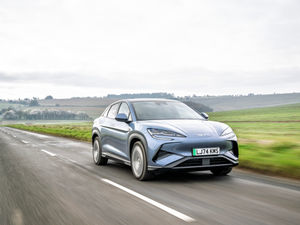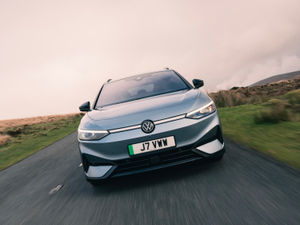Ford's new Fiesta eclipses the successes of its predecessor
Jon Reay has been to drive the latest incarnation of Ford’s hugely successful Fiesta. Has it managed to eclipse the previous car? Let him explain
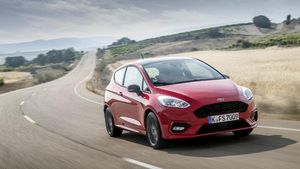
What’s new?
Is this the most important new car of 2017? If you’ve been paying attention to just how many Fiestas that Ford manages to shift per year, it’s hard to argue otherwise. The Blue Oval’s second-smallest model has been the best-selling car in Britain since 2009, and has consistently appeared in the top 10 since it was launched in 1976.

The Fiesta’s position is under threat, though, with the market for more premium-badged competitors such as the Audi A1 and DS 3 growing ever stronger. Ford’s answer is to fight back with arguably the plushest Fiesta yet, complete with oodles of new technology and a top-spec Vignale model that tips the scales at an eye-watering £19,345 in its cheapest guise.
Looks and image
The Fiesta’s party piece has traditionally been the way it handles, with a playful character and the kind of poise and precision you wouldn’t expect in a supermini.
Go for the ST-Line trim – with its lowered suspension and specially tuned power steering – and you’ll find the Fiesta’s character remains very much intact, with a set-up that generally favours fun over outright comfort.
Other trims – from Style to Vignale – get considerably softer settings, gliding over potholes and imperfections without fuss, for which the majority of buyers will no doubt be thankful.
Interior quality too has taken a drastic step up. There are soft-touch plastics aplenty and switches have a reassuring feel to them, while Vignale-spec cars get plusher seats and a leather-trimmed dashboard.
Space and practicality
The Fiesta’s dimensions have grown ever so slightly over the old model, but you’d be hard-pushed to spot the differences. Ford says that rear passengers have gained 16mm of knee room, while there’s a 20 per cent larger glovebox – hardly a big step up in practicality, in other words. Boot space, meanwhile, is now a respectable 303 litres against the old car’s 290 – beating that of the Nissan Micra and Renault Clio, but still short of the Honda Jazz’s 399-litre capacity.

Euro NCAP is yet to test the new model, but thanks to buckets of new safety technology the Fiesta is expected to achieve a five-star rating. Blind-spot detection, pre-collision assist with pedestrian detection and distance alert are all now available, while the body contains more high-strength steel for diverting impact energy away from the occupants.
Behind the wheel
The ST-Line trim in 1.0-litre 138bhp guise is the sportiest Fiesta available until the full-fat ST appears next year, and makes for a pretty decent ‘warm’ hatch. As ever, the characterful 1.0-litre EcoBoost is a joy to rev all the way to the limiter, but with 180Nm of torque delivered at as low as 1,500rpm it feels just as flexible at less frantic engine speeds too.
With the ST-Line, ride and handling are exactly what you’d expect for a trim level sat between the standard car and the ST hot hatch: fun and inherently sporty without feeling compromised for everyday driving. There’s less isolation from bumps and potholes than in other trim levels, but reduced body roll is worth the trade-off, while the tweaked power steering gives you more confidence to throw it into corners in the first place.

Unsurprisingly for a Ford, the driving position is pretty much spot on and – in most trims at least – there’s plenty of seat adjustability to help you get comfortable. Parking is now even easier thanks to an optional park assist system, which can handle negotiating the car in and out of both parallel spaces and typical supermarket perpendicular bays. The driver is still required to work the gearbox, accelerator and brake, but the new system does at least emergency-brake if it senses a potential impact.
Value for money
There’s no hiding that Ford is pushing the Fiesta into more premium realms – particularly in top-of-the-range Vignale spec – but thankfully, most trim levels don’t see much of a price jump over the previous model. A three-door Zetec with the 98bhp 1.0-litre EcoBoost, for example, costs £120 less than the equivalent old Fiesta despite a few bits of extra kit.
Ford has added more tempting options than ever before, though, and many are limited to higher trim levels than you might like. Keyless entry, for example, is only available on Titanium trim or above, and standard only on Titanium X and Vignale.

Ford’s SYNC 3 infotainment system is – thankfully – standard on all but the entry-level Style trim, but you’ll need to pay extra for the larger eight-inch touchscreen rather than the standard 6.5-inch set-up. DAB is standard on all but the Style model too, while navigation is standard on Titanium trim and above, or a £300 option on Zetec and ST-Line.
Going even further with the premium add-ons, Ford has swapped the Sony-branded audio system of the old car for one designed in collaboration with B&O Play – an off-shoot of Bang & Olufsen.
Opt for this and you’ll get 10 speakers rather than the usual six – including a subwoofer hidden in the boot – said to have been extensively tuned for the Fiesta.
It won’t be rivalling the 23-speaker, 1,900-watt Bang & Olufsen system you’d find in an Audi Q7 any time soon, but it’s probably the best-sounding audio set-up in this segment – and well worth the £300 upgrade.
Who would buy one?
The Fiesta is probably one of the broadest-appealing cars on sale today. Anyone from new drivers to grandmothers are likely to be interested in the diddy Ford, while ever-increasing interior space has meant that even young families could be considered as Fiesta customers. To an extent, the Fiesta’s customer base is pretty well defined as it stands today.
Ford is hoping that the extra premium touches of the new car will steal some buyers back from the likes of the Audi A1, DS 3 and Mini too, and though it’s lacking a premium badge the Fiesta can certainly give them a run for their money in terms of refinement, handling and technology.
By Jon Reay
FACTS AT A GLANCE
Model: Ford Fiesta
Base price: £12,715
Price as tested: £18,945
Engine tested: 1.0 EcoBoost 140
Power: 138bhp
Torque: 180Nm
Max speed: 125mph
0-60mph: 9.0seconds
MPG: 62.8 (combined)
Emissions: 102g/km

